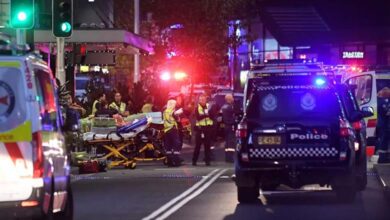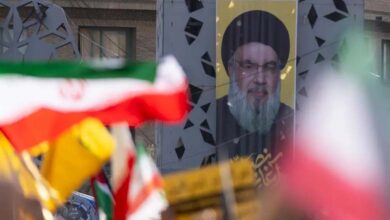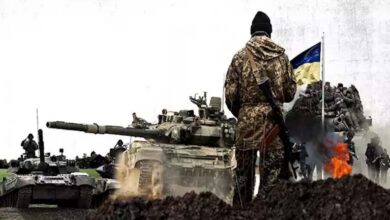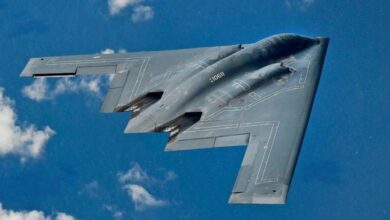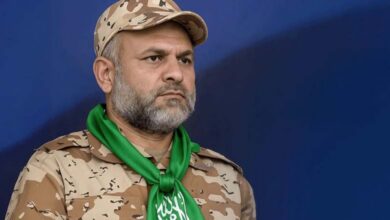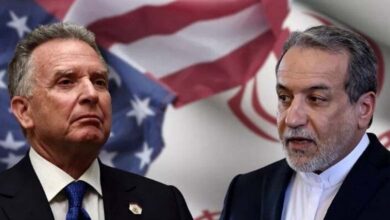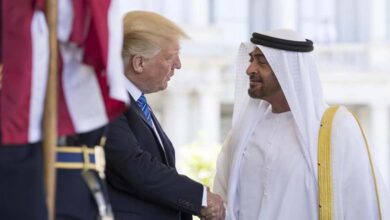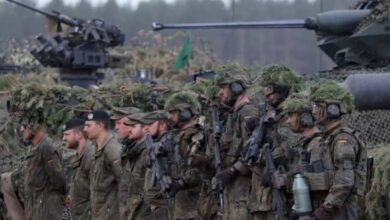Iran Holds Official Funerals for Military Commanders and Scientists Killed in Israeli Strikes
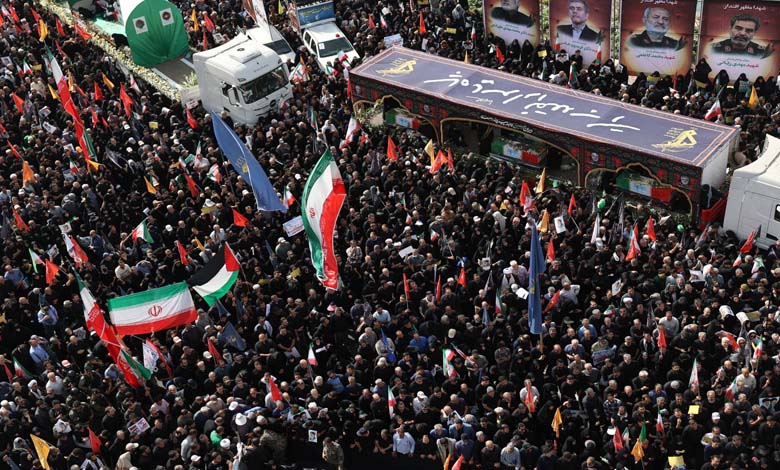
Official funeral ceremonies began Saturday morning in Iran for sixty military commanders and nuclear scientists killed in Israeli strikes during the twelve-day war between the two countries. The commemorations take place on the fifth day of a still-standing ceasefire, amid continued threats from U.S. President Donald Trump to strike the Islamic Republic again.
-
Iran’s Mount Fass: A Nuclear Stronghold Deeper Than Fordo and Natanz
-
Unprecedented Announcement: Israeli Commandos Operated Inside Iran
State television announced at 8:00 a.m. local time (4:30 GMT) that “the official ceremonies honoring the martyrs have begun,” broadcasting footage of crowds gathered in central Tehran to take part in the funerals of the “martyrs of the war imposed by the Zionist entity.”
The footage showed coffins draped in Iranian flags, adorned with portraits of the slain commanders in full military dress.
The funeral procession departed from Enqelab Square (“Revolution” in Persian) in downtown Tehran and headed toward Azadi Square (“Freedom”), located 11 kilometers away and known for its prominent landmark tower.
-
Post-Iran Strike Scenario: What Comes Next for the U.S. and North Korea?
-
Iran-Israel War: Has the Pentagon’s Confidence in THAAD Been Shaken?
President Massoud Pezeshkian took part in the ceremony, as shown on state television, which also featured General Esmail Qaani, head of the Quds Force—the external operations arm of the Islamic Revolutionary Guard Corps.
Ali Shamkhani, an advisor to Supreme Leader Ali Khamenei, appeared holding a cane after being injured in an Israeli airstrike.
Thousands of Iranians took to the streets, waving flags of the Islamic Republic and carrying signs with slogans such as “Boom Boom Tel Aviv,” referencing the missiles launched by Tehran in retaliation for the Israeli attacks.
-
Iran Faces the Battle Alone… Where Have Its Proxies Gone?
-
Threat Call: How the Mossad Tried to Shake Iran
On Friday, Mohsen Mahmoudi, a religious official in Tehran Province, told state TV, “Tomorrow will be a historic day for Islamic Iran and for the history of the revolution.” Many government offices and shops were closed Saturday in observance.
The conflict began in the early hours of June 13 with a surprise Israeli assault targeting military and nuclear sites in Iran. The strikes included assassinations carried out in residential apartment buildings. Israel declared that its objective was to prevent Iran from acquiring a nuclear weapon—a goal Tehran denies pursuing.
-
Iran’s Regime Focused on Finding a Successor to Khamenei
-
Trump Announces Ceasefire Between Israel and Iran
The initial attacks killed top military figures, including Chief of Staff of the Armed Forces Mohammad Bagheri, Revolutionary Guard Commander Hossein Salami, and Amir Ali Hajizadeh, head of the Guard’s Aerospace Force responsible for drones and missile capabilities. Bagheri’s wife and daughter Fereshteh, a journalist at an Iranian media outlet, were also killed.
Saturday’s funeral list includes at least 30 senior officers. Among the nuclear scientists is Mohammad Mahdi Tehranchi, who will be buried alongside his wife. Of the 60 individuals being honored in the funeral ceremonies, four are women and four are children.
-
Behind Trump’s Deal: How Iran and Israel Agreed to End the War
-
Iran’s Nuclear Program Under the Midnight Hammer
The Supreme Leader, Ayatollah Ali Khamenei, usually leads funeral prayers for prominent figures in Iran. However, authorities have not yet announced whether he will preside over Saturday’s ceremonies.
Israeli strikes on Iran have resulted in at least 627 deaths, according to a health ministry toll limited to civilian casualties. In Israel, 28 people have been killed by Iranian strikes, according to official figures.
-
Trump Does Not Rule Out Working Toward Regime Change in Iran
-
15 Iranian Missiles in 4 Waves Trigger Alarms in Israel for 40 Minutes
A ceasefire announced by Trump has been in effect since Tuesday, following twelve days of Israeli airstrikes targeting mainly military and nuclear sites in Iran. On the night of June 21-22, the United States also carried out strikes on three major nuclear sites.
The Islamic Republic responded to Israeli strikes by launching missiles and drones toward the Israeli state, while also firing missiles at a U.S. base in Qatar in retaliation for Washington’s strikes.
-
Trump announces destruction of Iran’s nuclear capabilities in a series of US strikes
-
Iran: No Damage to Fordo and Highly Enriched Uranium Moved Before U.S. Strike
On Friday, Trump threatened that the U.S. would resume strikes against Iran if it enriched uranium for military use, accusing Khamenei of denial.
On his platform Truth Social, he wrote, “I knew exactly where he was hiding, and I did not allow Israel, nor the U.S. Armed Forces—the greatest and most powerful in the world—to end his life.”
The U.S. president also said he had been working in recent days on possibly lifting sanctions on Iran, adding, “Instead, I received a statement full of anger, hatred, and disgust, and I immediately stopped working on easing sanctions.”
-
Iran’s Missile Arsenal: What Hasn’t Yet Been Used in the War with Israel
-
Direct Hit: Iranian Drone Strikes Residential Building in Northern Israel
On Thursday, Iranian television broadcast a speech by Khamenei praising the “victory” of the Iranian people over the “false Zionist entity” and downplaying the U.S. strikes on major nuclear facilities.
On Saturday, Iranian Foreign Minister Abbas Araghchi condemned Trump’s “unacceptable” remarks against Khamenei.
He wrote on X (formerly Twitter), “If the U.S. president sincerely wants to reach an agreement, he must put aside his humiliating and unacceptable tone toward the Supreme Leader and stop hurting millions of his loyal supporters.”
-
Israel strikes Hamas, Hezbollah, and Houthi “weapons supply line” in Iran… Who is Behnam Shahriari?
-
Mutual escalation between Iran and Israel despite calls for de-escalation
He added that “the great and powerful Iranian people, who have shown the world that the Israeli regime had no choice but to turn to ‘Papa’ to avoid being wiped off the map by our missiles, do not accept threats or insults.”
During his first presidential term, Trump withdrew in 2018 from the historic nuclear deal negotiated under President Barack Obama with Iran.
The deal aimed to make it practically impossible for Iran to build a nuclear bomb while allowing it to continue a civilian nuclear program.
-
Israel targets Isfahan nuclear site.. Iran confirms thwarting the attack
-
Iranian missiles expose racial discrimination in Israeli shelters
However, Iran, which insists its nuclear program is solely civilian, intensified enrichment activities following the U.S. withdrawal.
Israel announced it “thwarted the Iranian nuclear project” during the war. On Friday, its foreign minister Gideon Sa’ar wrote on X, “Israel acted at the last possible moment against an imminent threat against itself, the region, and the international community.”
Following U.S. strikes on Iranian nuclear sites, Trump said negotiations on a new agreement were scheduled to begin the following week.
But Tehran denied the resumption of talks, and Khamenei, in his first appearance since the ceasefire, vowed not to yield to Washington’s pressures, declaring that it had received a “severe slap.”


